Thessaloniki gets ready for its metro launch in November
The underground rapid transit lines have been under construction for almost two decades due to various project delays
 TheMayor.EU logo
TheMayor.EU logo Even if the pedestrian transformation is still at its beginning stages, these can serve as a good example
European cities are some of the best in the world when it comes to the availability of public transport, however, the car is still king in most urban areas. Nevertheless, some municipalities on the continent – from small towns to larger cities – are quietly leading a revolution that seeks to return public spaces to the way they used to be in the distant past, that is free of car traffic.
Ever since one German by the name of Karl Benz decided to make a carriage that would be powered not by horses but by a fossil-fuel engine, the world hasn’t been the same. People have yielded the streets to cars and the cities have become much dustier and noisier as a result.
The following municipalities, however, have shown that it is possible to reverse a trend that now seems so ingrained in our modern psyche. Visit these towns to not only imagine but also experience what life without a car in sight looks and feels like.
From historic hubs to modern metropolises, these places stand as beacons of innovation, setting the stage for a world where pedestrians and cyclists reign supreme, and cars are relegated to the annals of history. Can it be done? We hear a resounding “Why not?”
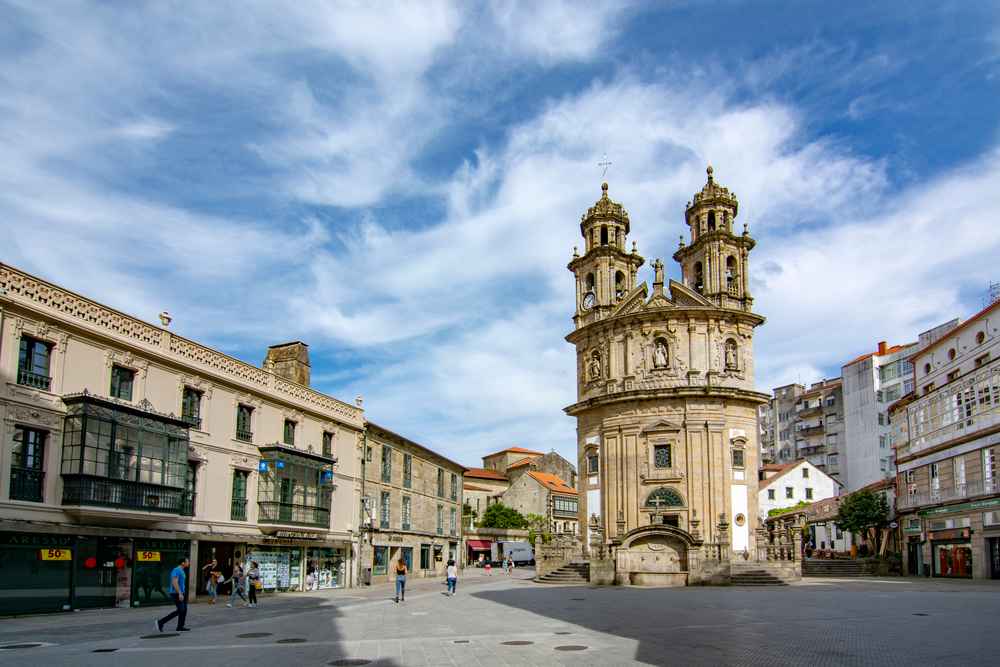
Pontevedra's road safety record is exceptional. Source: Depositphotos
Any such list should always begin with this charming city tucked in the northwestern corner of Spain, which Politico described as the “pioneer of Europe’s car-free future”. The transformation began in 1999 when the long-serving, and still current, mayor Miguel Anxo Fernandez Lores, stepped into office with the idea that he wanted to do something drastic that would make Pontevedra a shining example of virtue.
The city of 80,000 residents has been recognized numerous times as a successful example of pedestrianization gone right. The last traffic death on its territory occurred back in 2011 and it was caused by a delivery van. Overall, however, this is perhaps the safest town in Spain for pedestrians.
That incident, however, also points out that the label car-free is a little bit of a misnomer. Even the mayor himself warns against this label. In his opinion, according to CityChangers, a city without any cars would not be completely feasible. That’s why delivery vehicles still operate there. However, this demonstrates that in order to function properly an urban settlement needs very few vehicles.

Waling around Venice lengthens your life. Source: Depositphotos
The historic core of Venice, located in a large lagoon of the same name, has no cars on its narrow streets. The vehicles would be quite impractical there anyway. What’s more, Venice doesn’t allow bicycles either though. Reportedly, this makes the ancient town Europe’s largest pedestrian-only urban space.
It’s very much like the 20th century never paid a visit there, and that’s just marvellous and also a bit surprising – after all, everyone else seems to have dropped by. The medieval city has 438 bridges, 183 canals and countless narrow alleys. The main mobility mode is the iconic gondola boats. Still, there is the occasional roar of engines on the Canale Grande since there are motorboats operating in the vicinity, too, as well as ferries to the nearby islands. Luckily, at least the mammoth cruise ships are a thing of the past as well, following a spectacular incident involving one of these vessels crashing into a dock in 2019.
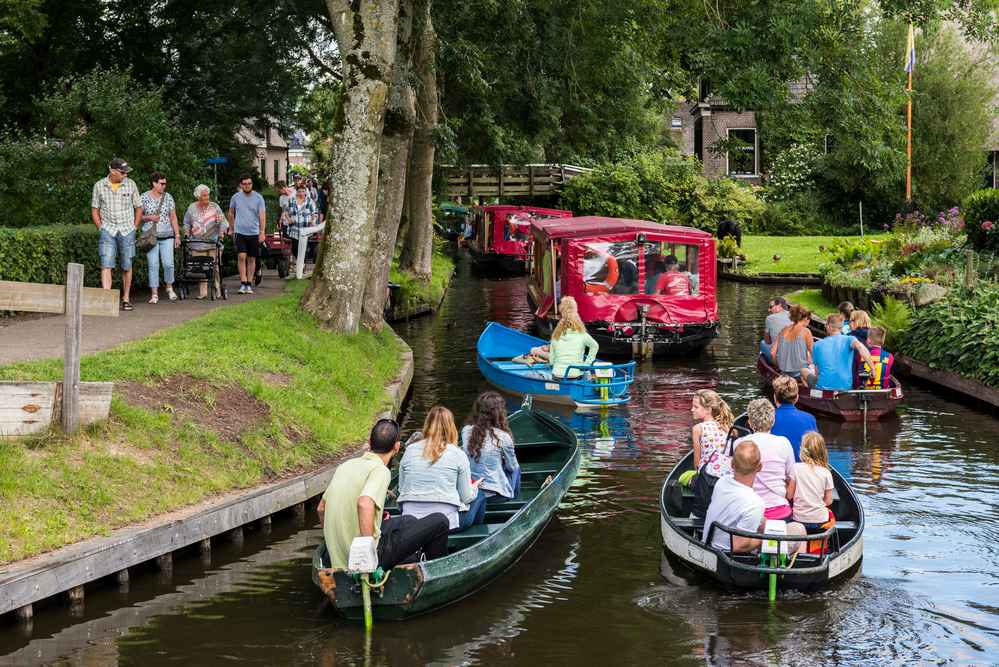
'No cars' doesn't translate to 'no traffic jams', though. Source: Depositphotos
Speaking of Venice, why not also speak of the Venice of the North, as the picturesque Dutch village of Giethoorn is often called? And the canals filled with boats are not the only thing resembling the more famous Italian counterpart.
Roads are non-existent here and as a consequence, neither are motorized vehicles. This being the Netherlands, however, means that one thing sets that town from the real Venice – bicycles are not only allowed but are actually the preferred mode of transportation. Banning the two-wheelers would be akin to blasphemy.
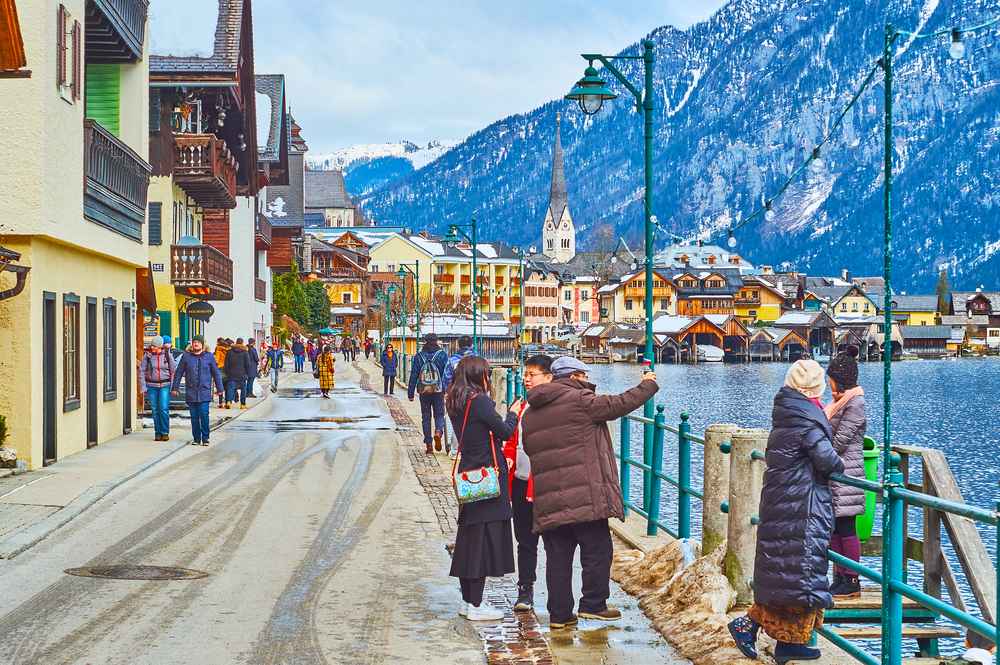
Tourists taking in the beauty of Hallstatt. Source: Depositphotos
That’s right. That one Austrian town that regularly features on all prettiest towns lists, but you never seem to remember its exact name, happens to be also car-free. I guess that adds enormously to the charm.
The UNESCO World Heritage site has provided parking areas at its periphery, however, where visitors, hotel guests and staff can park. The town centre, however, has barriers that cut the right of way.
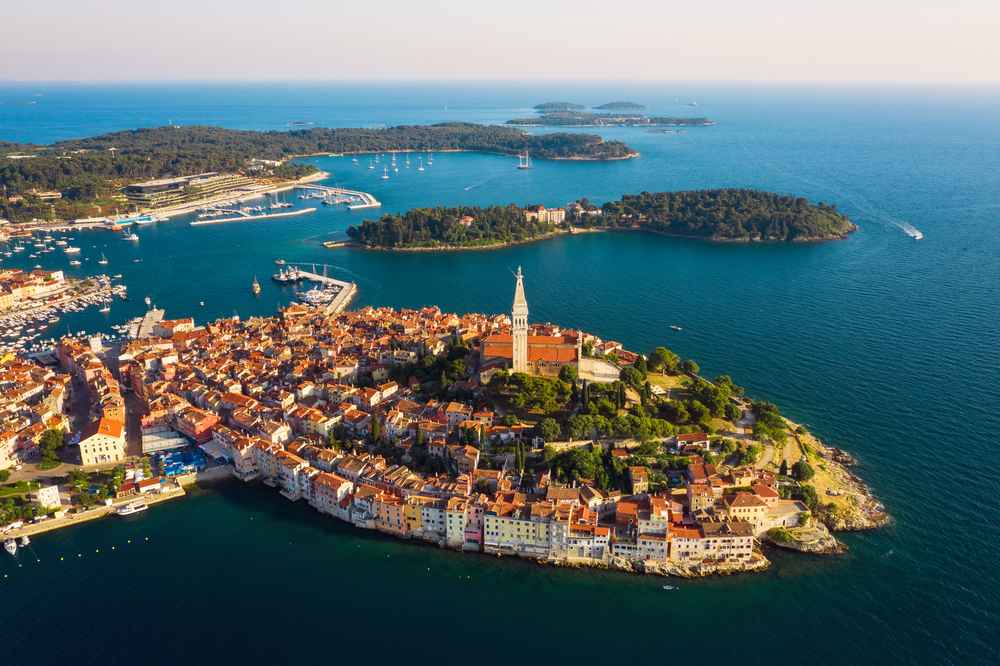
Rovinj and its oval-shaped old town. Source: Depositphotos
This Adriatic gem, less known than Dubrovnik, but just as enchanting, is supposedly Croatia’s largest pedestrian zone. That includes the cobble-stoned and Instagram-worthy alleys of the entire medieval town.
If you decide to stay in the old town, double-check with the property if they provide parking at the nearby parking lots, and a free transfer to the hotel. The hotels in the old town usually use golf carts to transfer their guests from the parking spaces. But the town is not too big and walking around it is a gift to the senses on its own.
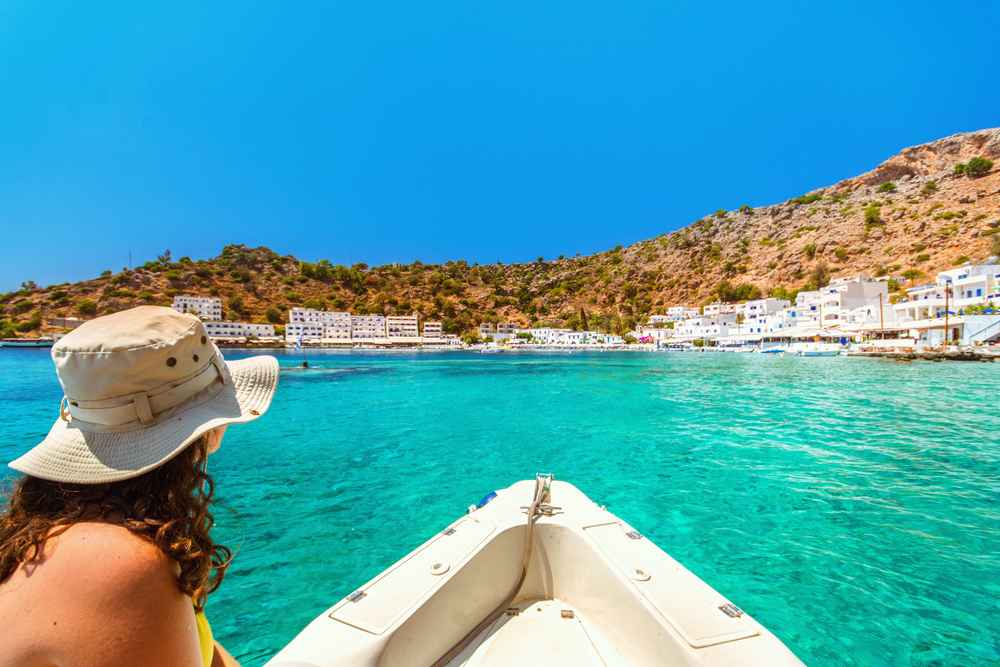
Getting to Loutro by a boat - highly recommended. Source: Depositphotos.
Loutro is located on Greece’s largest island Crete – more specifically, on the southern coast of its western section, hidden in an azure cove. There are only two ways to get there – by boat or on foot. And as you can guess, the second option is only for the most dedicated and hardy of souls. Loutro is part of the Sfakia region, which has traditionally been known as somewhat isolated and home to proud, rebellious and independent people.
These days, getting there on a ferry is a delight. Literally, arriving in the small harbour with its pristine waters and white houses is a dream come true. The entire village counts some 300 residents and the number of roads is even smaller – zero.

Enchanting stuff. Source: Depositphotos
This hilltop town is straight out of a fairy tale, and just like in fairy tales its food and resources supply system used to be based on…donkeys. Yes, only those sturdy and stubborn animals could access the single narrow footbridge connecting the town to the rest of the world. You couldn’t get cars in there even if you wanted to – the ancient town planners made sure that it would be this way forever.
These days, though, donkeys have also been retired – either because of animal labour rights concerns or simply because they aren’t as numerous as they used to be. The few restaurants in town now get supplied through mopeds – hm, that’s a bit of a roll-back on the authenticity, but at least they aren’t cars.
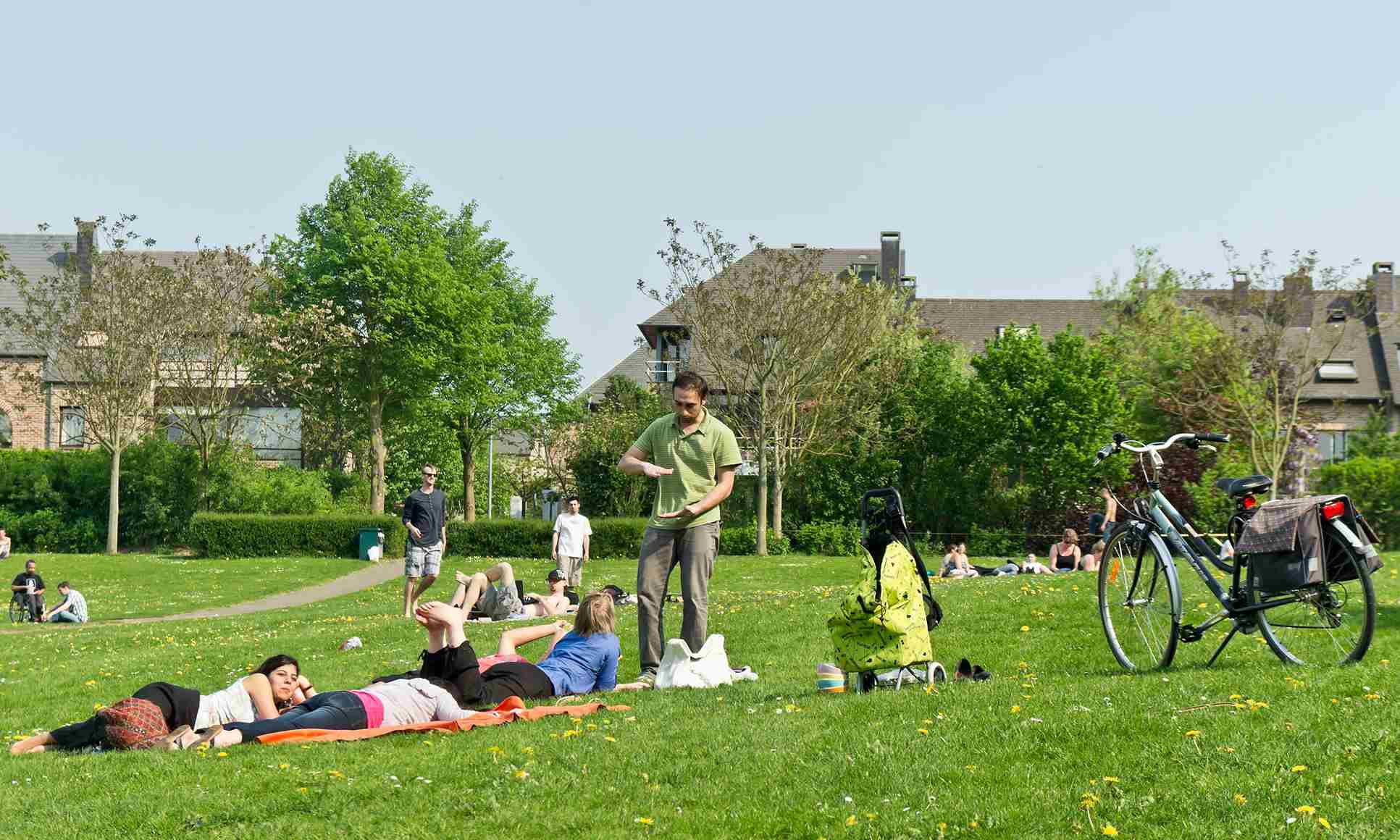
Louvain-la-Neuve is basically one enormous university campus. Source: Jean-Paul Remy, on Flickr (CC BY-NC-ND 2.0)
And from the Middle Ages, we jump straight into modernity with Louvain-la-Neuve, a town that was constructed in 1969 expressly with the purpose of hosting the Catholic University of Louvain-la-Neuve. Its academic nature and youthful spirit is reflected in the fact that it was designed to be nearly traffic-free even at a time when cars were as common as flies.
These days it draws tourists thanks to its Hergé Museum, where fans of comic books can get their fix of Tintin. The only thing is, if you come by car, you have to park at an underground parking space and then walk ten minutes to town. You can do it.
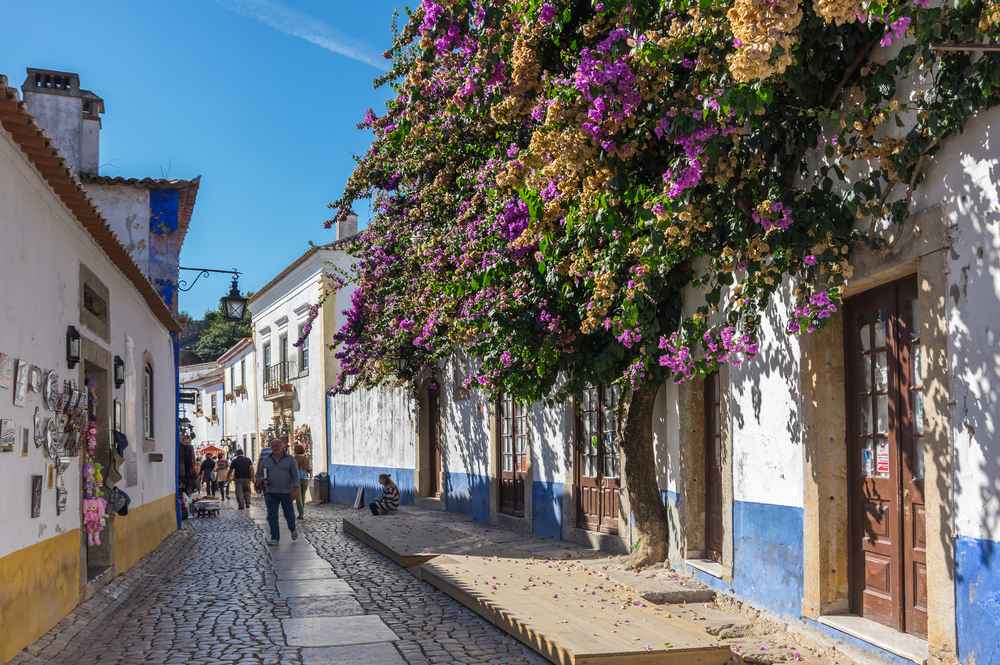
Cars would feel uncomfortable here anyway. Source: Depositphotos
Let’s venture one last time into Middle Ages because, after all, this is Europe. The walled town of Obidos in Portugal has stayed walled for a reason – the best way to keep invaders out, and that holds especially true for cars. Also, how else would you admire the jaw-dropping main gate called Porta da Vila decorated with traditional blue tiles? Passing underneath it with a car and spewing fumes on it? Think again.
It’s just a great feeling to be able to walk around and not anxiously look over your shoulder every time you’re crossing a street. Inside the walls, there’s a whole lot of beauty to discover and you can also walk on the actual walls as well, which will grant you some stunning views.
You can do your part as well. This 22 September, celebrate World Car-Free Day and instead of turning on the engine, turn on your phone’s step-counter and cherish health.

The underground rapid transit lines have been under construction for almost two decades due to various project delays

Now you can get your wine in Talence by paying directly in Bitcoin

That’s because the state has to spend money on updating the railway infrastructure rather than subsidizing the cost of the popular pass

Rethinking renewable energy sources for the urban landscape

The examples, compiled by Beyond Fossil Fuels, can inform and inspire communities and entrepreneurs that still feel trepidation at the prospect of energy transition

Now you can get your wine in Talence by paying directly in Bitcoin

The 10th European Conference on Sustainable Cities and Towns (ESCT) sets the stage for stronger cooperation between the EU, national and local level to fast track Europe's transition to climate neutrality.

At least, that’s the promise made by the mayor of Paris, Anne Hidalgo

The underground rapid transit lines have been under construction for almost two decades due to various project delays

At least, that’s the promise made by the mayor of Paris, Anne Hidalgo

Hostal de Pinós is located in the geographical centre of the autonomous region

Despite its church-y name, the district has long been known as the hangout spot for the artsy crowds

Urban dwellers across the EU are having a say in making their surroundings friendlier to people and the environment.

Forests in the EU can help green the European construction industry and bolster a continent-wide push for architectural improvements.

Apply by 10 November and do your part for the transformation of European public spaces

An interview with the Mayor of a Polish city that seeks to reinvent itself

An interview with the newly elected ICLEI President and Mayor of Malmö

A conversation with the Mayor of Lisbon about the spirit and dimensions of innovation present in the Portuguese capital














